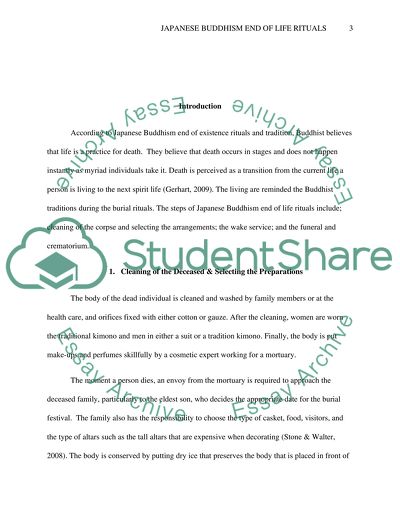Cite this document
(“Japanese Buddhism End of Life Rituals Essay Example | Topics and Well Written Essays - 1000 words”, n.d.)
Japanese Buddhism End of Life Rituals Essay Example | Topics and Well Written Essays - 1000 words. Retrieved from https://studentshare.org/health-sciences-medicine/1448140-japanese-buddhism-end-of-life-rituals
Japanese Buddhism End of Life Rituals Essay Example | Topics and Well Written Essays - 1000 words. Retrieved from https://studentshare.org/health-sciences-medicine/1448140-japanese-buddhism-end-of-life-rituals
(Japanese Buddhism End of Life Rituals Essay Example | Topics and Well Written Essays - 1000 Words)
Japanese Buddhism End of Life Rituals Essay Example | Topics and Well Written Essays - 1000 Words. https://studentshare.org/health-sciences-medicine/1448140-japanese-buddhism-end-of-life-rituals.
Japanese Buddhism End of Life Rituals Essay Example | Topics and Well Written Essays - 1000 Words. https://studentshare.org/health-sciences-medicine/1448140-japanese-buddhism-end-of-life-rituals.
“Japanese Buddhism End of Life Rituals Essay Example | Topics and Well Written Essays - 1000 Words”, n.d. https://studentshare.org/health-sciences-medicine/1448140-japanese-buddhism-end-of-life-rituals.


